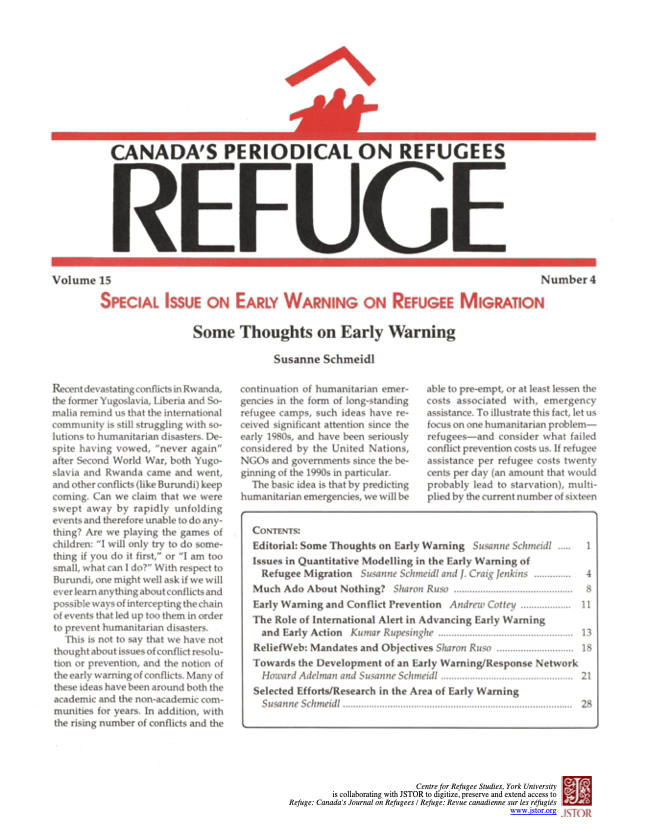Issues in Quantitative Modelling in the Early Warning of Refugee Migration
DOI:
https://doi.org/10.25071/1920-7336.21877Keywords:
refugees, migration, early warning models, qualitative EWM, ecological disasters, humanitarian disasters, late warningAbstract
This article discusses the problems associated with indicator analysis for the purpose of early warning. While the authors endorse the idea of quantitative EWM, they are sceptical of the understanding that many have of what EW analysis entails. In this article, they identify the limits of quantitative EW analysis and address many of the major problems that confront those who are committed to quantitative EW analysis. In particular, the authors discuss the following issues that need to be addressed when engaging in quantitative early warning analysis: the problem of "late warning;" problems of contextual sensitivity; problems of temporal development; data availability and measurement; and problems with the definition of the appropriate unit of analysis.Metrics
Downloads
Published
How to Cite
Issue
Section
License
Copyright (c) 1996 Susanne Schmeidl, J. Craig Jenkins

This work is licensed under a Creative Commons Attribution-NonCommercial 4.0 International License.
Refuge authors retain the copyright over their work, and license it to the general public under the Creative Commons Attribution-Non Commercial License International (CC BY-NC 4.0). This license allows for non-commercial use, reproduction and adaption of the material in any medium or format, with proper attribution. For general information on Creative Commons licences, visit the Creative Commons site. For the CC BY-NC 4.0 license, review the human readable summary.








